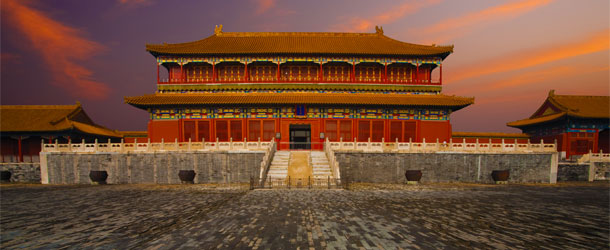As Beijing’s a popular place in which to end a Yangtse river cruise, I thought it would be fitting to end my recent look at some of the river’s most famous attractions by taking a walk through one of the city’s most iconic and enthralling attractions, the Forbidden City.
What is it?
The largest surviving temple complex in the world and a UNESCO World Heritage Site. Built over 250 acres and comprising 980 buildings, it dates back to the time of the Ming Dynasty, when it served as the emperor’s sprawling palace. Work started on the city in 1406 and took 14 years, which should give you some idea of its scale. For 500 years it was the home of China’s 24 successive emperors and their ruling dynasties and also the Chinese government and today, it’s the home of the Palace Museum, which has been responsible for the Forbidden City’s upkeep since 1925, the year after Puyi, the Last Emperor of China was finally evicted from the city following a coup.
What will I see?
Under the administration of the Palace Museum, the city is currently undergoing a massive 16-year restorative project to restore it to the state it was in prior to 1912, when Puyi abdicated. It’s impossible to see everything, (there are around 9,000 rooms here) though you’ll certainly have the chance to witness some of the city’s key architectural treasures during your visit. The Forbidden City is surrounded by 26ft-high walls and a 20-foot foot deep and 171ft wide moat, which gives you some idea of how defensively effective it was throughout its history. These days, though it’s somewhat easier to gain entry and there’s certainly as lot for visitors to see.
The palace is divided into two parts – the Inner Court and Outer Court. The Outer Court was traditionally largely ceremonial and is home to the halls of harmony; largest of which, The Hall of Supreme Harmony, is China’s largest surviving wooden structure. These halls are linked by ornate ramps and terraces and offer a truly fascinating look into China’s imperial past. The Inner Court was traditionally the part of the palace dedicated to the emperor and his family and the emperor was only seen in the outer court during ceremonious occasions. Key sites here include the Palace of Heavenly Purity, the Palace of Earthly Tranquillity and the Hall of Union, where the 25 seals of the Qing Dynasty can be found.
The Palace Museum, meanwhile, is home to around a million rare pieces of art, including ceramics, paintings, sculptures and seals and thousands more artefacts besides. There are ceramic collections from the time of the Tang and Song Dynasties, and over 50,000 paintings, 400 of which date back to the time of the Yuan Dynasty and a number of bronze ware items which date to the pre-Qin period and well over 2,000 years old. China and jade of course go hand in hand, and the Palace Museum has around 30,000 pieces, some of which date to the Neolithic period.
Why is it forbidden?
The city’s Chinese name is Zijin Cheng, the ‘zi’ of which refers to the North Star, the traditional home of the Celestial Emperor. The Forbidden City was the Earthly version of this home and indeed, the ‘jin’ part of the name means ‘forbidden’, because traditionally, no one was allowed to enter or leave the palace without the permission of the emperor. The ‘cheng’ part simply means ‘walled city’.
By Simon Brotherton
Google



